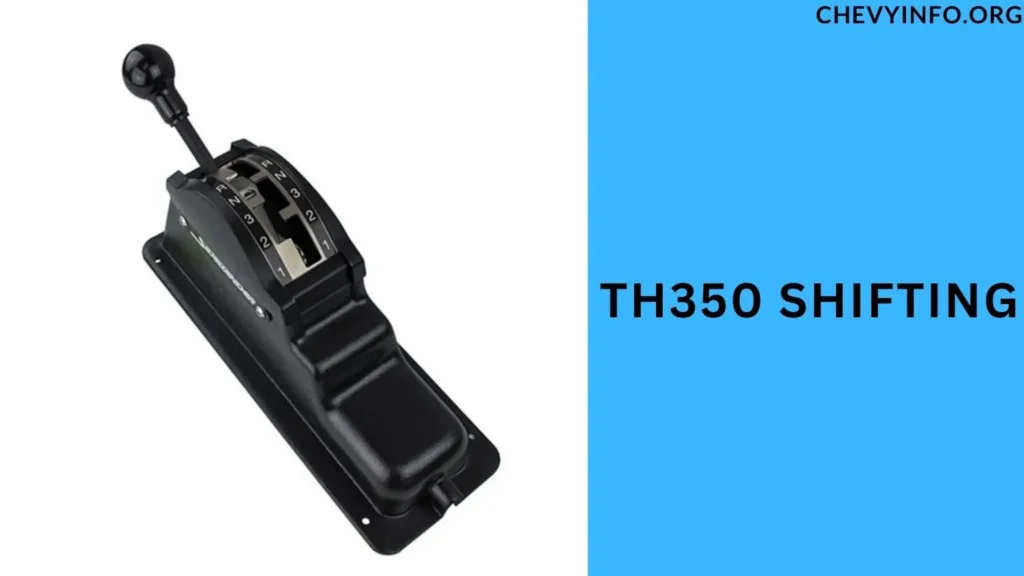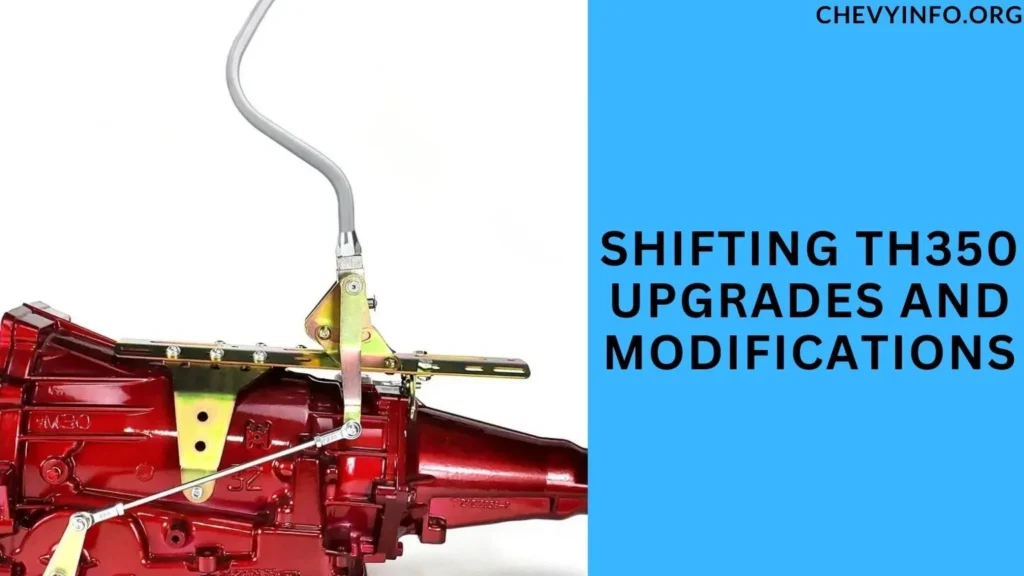TH350 Shifting (Mean, Causes & Fixing Tips) of 2024
The TH350 transmission, also known as the Turbo-Hydramatic 350, is a popular automatic transmission used in various vehicles.
Understanding how TH350 shifting works and addressing common issues is essential for vehicle owners and enthusiasts.

Introduction to TH350 Transmission
The TH350 is a three-speed automatic transmission developed by General Motors. It was widely used in GM vehicles from the 1960s through the 1980s.
Known for its durability and smooth operation, the TH350 gained popularity among car enthusiasts and builders.
Components of TH350 Transmission
The TH350 transmission, also known as the Turbo-Hydramatic 350, is a popular automatic transmission used in various vehicles.
It comprises several essential components that work together to facilitate smooth and efficient operation. Here are the key components of the TH350 transmission:
Torque Converter
The torque converter is a key component that transfers power from the engine to the transmission. It utilizes fluid coupling to smoothly transmit power and allows for automatic shifting.
Planetary Gearsets
The TH350 utilizes planetary gearsets to achieve different gear ratios. These gearsets are responsible for gear shifting and torque multiplication, enhancing the transmission’s performance.
Bands and Clutches
Bands and clutches are used to engage and disengage gears within the transmission. Proper adjustment and maintenance of these components are crucial for smooth shifting.
Valve Body
The valve body controls hydraulic pressure within the transmission, affecting gear changes and shifting smoothness. Upgrading the valve body can improve shifting performance.
How TH350 Shifting Works?
Shifting TH350 operates based on predefined shift points and gear ratios. Understanding these aspects helps in optimizing the transmission’s performance.
Shift Points
The TH350 is designed to shift gears at specific engine speeds, known as shift points. These points can be modified for performance upgrades or specific driving conditions.
Gear Ratios
The transmission’s gear ratios determine the relationship between engine speed and wheel speed. Different gear ratios offer varying levels of torque and speed for optimal driving performance.
Common Issues with TH350 Shifting
Despite its reliability, the TH350 may experience shifting issues over time. Common problems include slipping gears, harsh shifting, and delayed shifting, which can affect driving experience and transmission longevity.
Slipping Gears
Slipping gears occur when the transmission fails to engage properly, leading to power loss and reduced performance. Proper maintenance and adjustments can prevent this issue.
Harsh Shifting
Harsh shifting refers to abrupt gear changes that can cause jerking or clunking sensations. This can be caused by worn-out components or improper fluid levels.
Delayed Shifting
Delayed shifting involves a delay in gear engagement, leading to hesitation during acceleration. Addressing this issue may require adjustments or repairs to the transmission.
Shifting TH350 Upgrades and Modifications

Enhancing shifting TH350 performance can be achieved through various upgrades and modifications tailored to specific needs.
Shift Kits
Aftermarket shift kits are available to improve shift firmness and timing, providing a more responsive driving experience.
Performance Torque Converters
Upgrading to a performance torque converter can enhance torque delivery and overall transmission efficiency, especially for high-performance applications.
Valve Body Modifications
Modifying the valve body with upgraded components or aftermarket kits can optimize hydraulic pressure and improve shifting characteristics.
Tips for Maintaining TH350 Transmission
Proper maintenance is essential for prolonging the lifespan of the TH350 transmission and ensuring optimal performance.
Fluid Changes
Regular fluid changes with the recommended transmission fluid are crucial for smooth operation and heat dissipation.
Proper Adjustment
Periodic adjustments of bands, clutches, and linkage ensure proper function and prevent shifting issues.
Regular Inspections
Routine inspections of the transmission components help detect any wear or damage early, allowing for timely repairs or replacements.
People also ask
What are the shift points for a TH350?
The shift points for a TH350 transmission typically occur at specific engine speeds, which are determined by factors such as throttle position, vehicle load, and driving conditions.
These shift points are pre-set by the transmission’s programming and can also be adjusted or modified for performance enhancements.
How to make a TH350 shift harder?
To make a TH350 transmission shift harder, you can consider the following methods:
Shift Kit Installation: Install a shift kit designed for the TH350 transmission. This kit modifies the valve body and enhances hydraulic pressure, resulting in firmer and quicker shifts.
Adjust Bands and Clutches: Properly adjust the bands and clutches within the transmission to ensure they engage more firmly, creating a harder shift feel.
Upgrade Torque Converter: Consider upgrading to a performance torque converter designed to deliver higher stall speeds and firmer engagement, leading to harder shifts.
Modify Valve Body: Modify the valve body of the TH350 transmission to optimize fluid flow and pressure, improving shift firmness and responsiveness.
How much HP can a TH350 handle?
A well-built TH350 transmission can typically handle up to around 450-500 horsepower reliably.
However, this can vary depending on factors such as the specific build quality, intended use (street or racing), and maintenance schedule.
For higher horsepower applications, upgrades such as stronger internal components and torque converters may be necessary to ensure durability and performance.
How do you adjust the modulator on a Turbo 350 transmission?
To adjust the modulator on a Turbo 350 transmission, follow these steps:
Locate the modulator valve on the transmission case, usually on the passenger side.
Disconnect the vacuum hose from the modulator valve.
Insert a small screwdriver into the adjustment screw on the modulator.
Turn the screw clockwise to increase transmission shift firmness or counterclockwise to decrease firmness.
Reconnect the vacuum hose and test drive the vehicle to evaluate the shift quality.
Fine-tune the adjustment as needed until the desired shift feel is achieved.
Conclusion
In Conclusion, Understanding shifting TH350 and addressing common issues is vital for maintaining a reliable and efficient transmission.
With proper maintenance and occasional upgrades, the TH350 can provide years of smooth operation and enjoyable driving experiences.

Henry Worner, a seasoned automotive expert with over 13 years of experience in car repair, maintenance, and performance enhancement, ChevyInfo.org was born out of a passion for Chevrolet vehicles. Henry’s deep-rooted love for everything Chevy has driven him to create a platform where fellow enthusiasts, car owners, and anyone interested in Chevy cars can find valuable insights, tips, and guidance.






